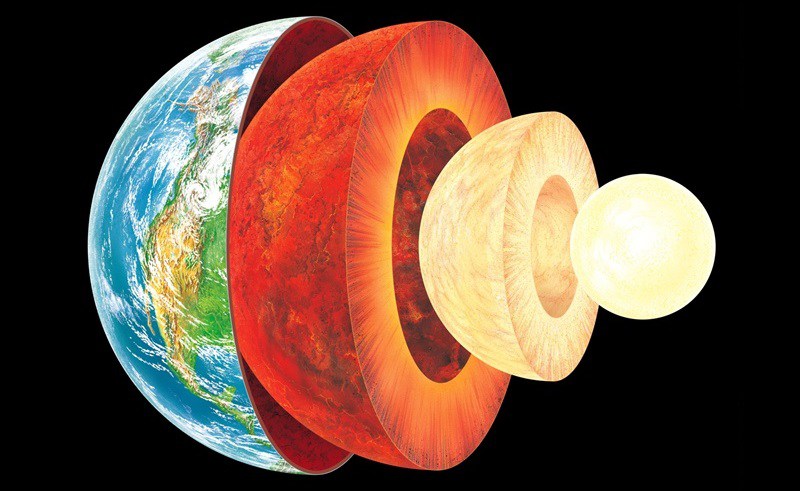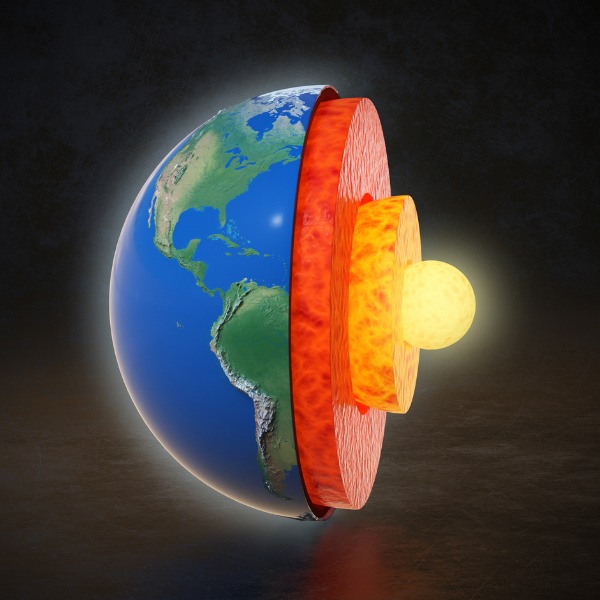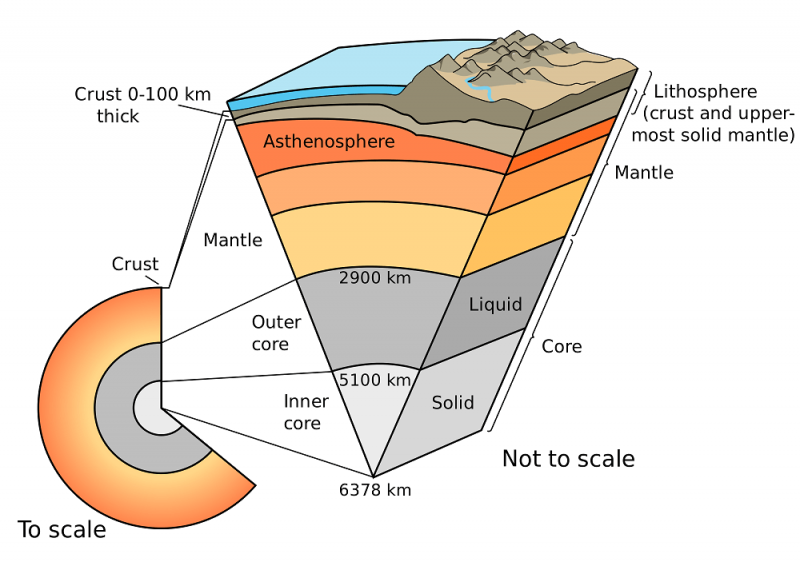What Caused the Earth to Develop Layers as It Cooled
What caused Earth to develop layers as it cooled. Differences in density caused earth to develop layers as it cooledThe earth has.
Earths crust is the planets thinnest layer accounting for just 1 of Earths mass.

. Over the course of a few hundred million years the planet began to cool and oceans of liquid water formed. Recent evidence suggests the oceans may have begun forming as early as 44 Ga. As Earth cooled an atmosphere formed mainly from gases spewed from volcanoes.
The surface was molten. After about half a billion years Earths surface cooled and solidified enough for water to collect on it. As the Earth cooled clouds formed.
Two common types of fog are called radiation fog and advection fog. Due to this the outermost layer is made of the lightest materials such as rocks and granites and the innermost layer consists of nickel and iron. 45 billion years ago extreme temperatures prevailed on the surface of the young Earth and.
Volcanoes released gases H 2 O water as steam carbon dixoide CO 2 and ammonia NH 3. Thin dense oceanic crust and thick less-dense continental crust. Earths second atmosphere came from Earth itself.
What caused the earth to develop layers as it cooled. Escape of gases purces B. What drives the process of plate tectonics the currently accepted explanation for the movement of drifting continents.
Its atmosphere began to form as the planet started to cool and gravity captured gases from Earths volcanoes. By the start of the Archean eon they already covered much of the Earth. Oceanic crust extends about 5 to 10 kilometers 3 to 6 miles beneath the ocean floor.
3 question What caused Earth to develop layers as it cooled. Or the rock known as. Oceanic crust is composed of dense basalt and gabbro.
In Earths Beginning. Continental crust is less dense and has a granitic composition overall. Most of the geologist believes that as the Earth cooled the heavier and the denser material sank into the centre and the lighter ones rose towards the top.
If the air is moist enough the cooling causes it to reach saturation and. It included hydrogen sulfide methane and ten to 200 times as much carbon dioxide as todays atmosphere. Lines of latitude describe position.
The difference in composition is what caused the Earth to develop layers as it cooled. North or south of the equator. Carbon dioxide dissolved in seawater.
When Earth first formed it had barely any atmosphere. Its speed of rotation C its magnetic field Earth D. The mantle is much thicker than the crust and measures some 2900 km in depth and is mainly composed of silicate rock such as olivine garnet and pyroxene.
What drives the process of plate tectonics the currently accepted explanation for the movement of drifting continents. Earths interior is commonly further. The Earth formed over 46 billion years ago out of a mixture of dust and gas around the young sun.
There are two kinds of crust. Some researchers believed the event -- which cooled the Earth by about 3 degrees Centigrade a huge amount -- was caused by an extraterrestrial impact with the Earth such as a meteor collision. The difference in composition is what caused the Earth to develop layers as it cooledDifferences in density caused earth to develop layers as it cooledThe earth has different layers because as.
What is the area of Earth Science that examines the physical and biological changes that have occurred in Earths past. It is not very likely that the total amount of water at Earths surface has changed significantly over geologic timeBased on the ages of meteorites Earth is thought to be 46 billion years oldThe oldest rocks known are 39 billion to 40 billion years old and these rocks though altered by post-depositional processes show signs of. Rain created the oceans.
When the surface of Earth had cooled to below 100 C 212 F the hot water vapour in the atmosphere would. Stars are known to get brighter as they age. When the Earth was young the majority of the mantle would have been viscous melted rock but this has cooled and solidified over millions of years to form the mantle we know today.
What are the main areas of study for Earth Science. An unequal distribution of heat within earth. The evolution of our Earth is the story of its cooling.
The division of the Earths interior into 3 distinct layers called the core mantle and crust is based on chemical composition. What caused Earth to develop layers as it cooled. By-product is oxygen O 2.
Simple bacteria thrived on sunlight and CO 2. Radiation fog forms during the night as the earths surface cools and the air immediately above it cools in turn by conduction. What do lines of latitude describe.
It grew larger thanks to countless collisions between dust particles asteroids and other growing planets including one last giant impact that threw enough rock gas and dust into space to form the moon. Volcanic degassing of volatiles including water vapour occurred during the early stages of crustal formation and gave rise to the atmosphere. Gradually the Earth cooled and.
At this point much of the Earth was molten and there may have been a magma ocean at the surface. This early formation has been difficult to explain because of a problem known as the faint young Sun paradox. What is the study of the atmosphere and the processes that produce weather and climate.
At its beginning Earth was unrecognizable from its modern form. There were lots of volcanoes many more than today because Earth. Origin and evolution of the hydrosphere.
At first it was extremely hot to the point that the planet likely consisted almost entirely of molten magma. Eventually the magma cooled to form a thin layer of silicaaluminum-rich crust.

Why Does The Earth Have Layers Let S Talk Science

3 1 Earth S Layers Crust Mantle And Core Physical Geology First University Of Saskatchewan Edition

Comments
Post a Comment